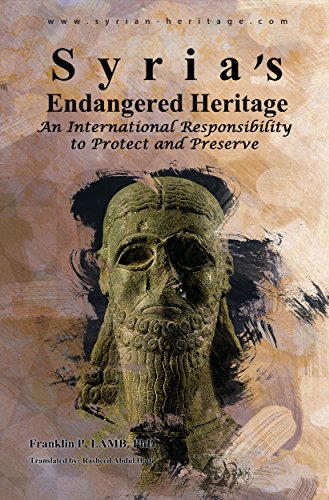The National Museum, Damascus
Curating antiquities or attending international conferences on archaeology have become capital offenses among some claimed "religious purists." Two more Syrian nationalists who served all of us by protecting and preserving our global cultural heritage in this cradle of civilization were murdered within the past two weeks just six days apart.
Qassim Abdullah Yehya 37, and Khaled al-Assad 83, were two of the 14 committed professionals serving their country and all of humanity through current and past associations with Syria's renowned Directorate General of Antiquities & Museums (DGAM). As with a dozen of their DGAM colleagues before them, Mssrs. Yehya and al-Assad were murdered in the line of duty since the March 2011 Syrian crisis erupted. Today's latest UN statistics estimate that more than 250,000 Syrians have lost their lives utterly devastating their families and loves one during these past 53 months of nearly unimaginable carnage.
This observer met both gentlemen during the past nearly three years while conducting research on the subject of Syria's Endangered Heritage. Qassim was the popular well-travelled, especially to Italy where he earned a graduate Degree and consulted on the subject of ancient Mosaics. He was Deputy Director of the DGAM Laboratories when this observer first met him in 2013. At the time Qassim showed me the work he and his team, including gifted "antiquities restoration" students from several institutions of higher learning in Syria who were repairing war-damaged Mosaics from around the country. Sometimes arriving in plastic bags or heaped into a pile in the trunk of a car or even by Syrian army vehicles, countless thousands of Mosaic chips known as Terrasse, some burned, other shattered or caked in mud or whatever would arrive at his facility deep inside the ancient Damascus Citadel in the Old City for painstaking, terrasse by terrasse Mosaic reconstruction.
Our second crossing of paths was earlier this year when the government of Syria, though Dr. Maamoun Abdel-Karim, a national and international hero for his work as Director-General of DGAM, kindly arranged for Syria's National Museum, which had been closed for more than two years, and remains so today, to be opened for a few hours. The purpose was to allow this observer, aided by his son Alistair, to examine and photograph the ancient 290 BCE Dura-Europos Synagogue from Deir Ez Zor which since 1932 has been secured and protected by the Syrian government and fully reassembled inside the vast Museum complex. For the past 18 months I have been trying to visit and research what's left of the Synagogue at Jobar but the Syrian army replies to each renewed request that it's still too dangerous. So, the ever understanding Dr. Maamoun, ordered the National Museum opened for me.
Qassim joined us inside the nearly empty of artifacts, and fortified Museum, and provided an enlightening briefing.
Under all sorts of dire and exceptionally dangerous circumstances, Syria's Directorate General of Antiquities and Museums (DGAM) is carrying out its responsibilities relying on the character and persistence of its 2,500 employees who have the will to defend and preserve Syria's cultural and national memory and our shared global heritage.
On August 12, 2015 six rockets were fired by rebels near Douma, a close-in eastern Gouta superb of Damascus. They targeted the ancient Citadel of Damascus and the National Museum. Qassim Abdullah Yahya, was martyred in the attack as he inspected the laboratories of the Directorate of Antiquities inside the citadel. Several employees who were working inside on sundry restoration projects were injured, two seriously. The terrorist attack also caused material but repairable damage to the museum building and to the ancient Citadel of Damascus, which since 1979 has been inscribed on the UNESCO World Heritage List.
Qassim was a highly professional specialist and is remembered by associates for working ever since the start of the current crisis under extremely stressful emergency circumstances including evacuating and documenting museum artifacts. The gentleman will forever be remembered as a hero to all who valued our identity, which is revealed by our shared past. He left a loving wife and three precious young children as well as many grieving colleagues and friends.
Under all sorts of dire and exceptionally dangerous circumstances, Syria's Directorate General of Antiquities and Museums (DGAM) is carrying out its responsibilities relying on the character and persistence of its 2,500 employees who have the will to defend and preserve Syria's cultural and national memory and our shared global heritage.
Barely six days after Qassim's murder another Syrian nationalist in service to all of us for his work in preserving and protecting our shared cultural heritage was brutally murdered on 8/18/2015.
(Note: You can view every article as one long page if you sign up as an Advocate Member, or higher).





